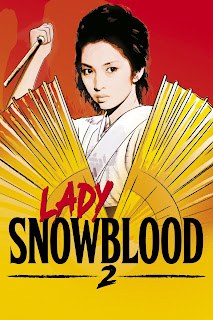Comedy/Drama/History
1 hour and 51 minutes
Rated: R
Written by: Pier Paolo Pasolini
Directed by: Pier Paolo Pasolini
Produced by: Alberto Grimaldi
Cast:
Franco Citti
Ninetto Davoli
Pier Paolo Pasolini
The World's First and Still the Greatest Erotic Masterpiece. Now brought to the screen with all the genius of Pier Paolo Pasolini
For his first entry into what would become known as his Trilogy of Life films, infamous Italian arthouse director Pier Paolo Pasolini would choose to adapt Giovanni Boccaccio's fourteenth century tale of sex, sin, and mayhem. And with the exception of transposing the stories within from Florence to Naples, Pasolini, to his credit, managed to keep a massive level of respect for the source material at hand by not altering the stories within to extreme degrees.
It would seem that Boccaccio's fourteenth century book of tales was tailor made for Pasolini, as would also seem the case for the other two sources for the second and third installments in Pasolini's Trilogy of Life: The Canterbury Tales and Arabian Nights. All three contain stories that swirl around and make excessive commentary about sex, love, religion, hypocrisy, poverty, deceit, and power - ideas that Pasolini attempted to explore profoundly in essentially all of his works. The Decameron, though, in particular, seems to set itself apart from the other two films by making great use of the director's ability to create moments that are undeniably funny.
It is the comedy of The Decameron that gives it a level of genius that while perhaps isn't on par with Pasolini's exploration of power in his later film Salò, or the 120 Days of Sodom, it does make the movie enjoyable to behold. While unquestionably Pasolini was probably more interested in exploring ideas of sex and deception, his utilization of humor in these sequences actually tends to outshine any other motives he may have had. Because it is such a lengthy film, there are sequences within that fall short. But the ones that are funny are marvelously so. In fact, what is perhaps most brilliant is Pasolini's use of various types of humor throughout the film. There's humor that feels more slapstick in nature, such as a story's hero falling into a vat of excrement, then of course there's deceptive humor such as when a tricky gardener reveals to a convent of horny nuns that he hasn't been mute or deaf all along and is well aware of their scandalous secrets. By having the delivery of the humor change throughout, Pasolini is able to keep this otherwise ancient and stale content all the more engaging. He had essentially, and perhaps wisely, tapped into the very essence of what has allowed Boccaccio's text to survive and be read for centuries after its creation.
The film is absolutely stunning to behold. Cinematographer Tonino Delli Colli captures urban towns, and rural countrysides with extraordinary beauty. There's an overall washed out tone to the film, that gives it a feeling of ancient quality - allowing for what is being seen to really be believed as being the fourteenth century. Also contributing to this are the film's wonderful costumes created by Danilo Donati. Donati's creations range from the vibrant to the bland, and mirror the blend of individuals one would sure find passing each other on the streets of fourteenth century Naples.
Because the stories of The Decameron move at a very quick speed, never allowing us as viewers to spend more than perhaps five minutes or so with a particular vignette, the performances within never amount to anything that is profound or remarkable. That being said, none fo the performers deliver bad performances, and many remain memorable for their signature Italian mannerisms that are altogether extremely charming and add to the overall humor and good nature of the film. Perhaps the only performance within the movie that feels out of place is the director's own cameo as a painter. Pasolini is seen in a sequence that is returned to throughout the film, painting a fresco inside of a monastery. By the film's end his fellow artists and the priests praise him for his work - an unfinished mural. What is being said here seems confusing. Was Pasolini commenting on his thoughts that perhaps the film itself was unfinished, but in its unfinished nature had reached a state of completion? This sequence overall, again, feels out of place with the humor and good nature of the rest of the film.
As stated above The Decameron is a long movie, filled with a lot of small vignettes. Because of this, the overall pace of the film does feel slow and as if it is lagging. It'd be impossible for any viewer not to start getting antsy by the film's second act, no matter how entertained they are by the various vignettes. Another, perhaps shocking, downfall of the film is its score. Legendary composer Ennio Morricone is responsible for this, and it is by far and away quite possibly his most unimpressive work. Then again, this could just seem to be the case given the score of The Decameron failing to reach any sort of masterful levels that Morricone is more than capable of.
While it may have been one of Pasolini's most successful motion-pictures, The Decameron is a lengthy film that ultimately suffers in being too long for its own good. Various vignettes within will leave viewers scratching their heads and wondering what they had to do with the overall themes and ideas that are being explored. Still, Pasolini's grasp for what is humorous and the overall beautiful cinematography and costumes make The Decameron an all around entertaining film, that any movie lover - especially those who enjoy foreign cinema - will find endearing.
6.5/10



